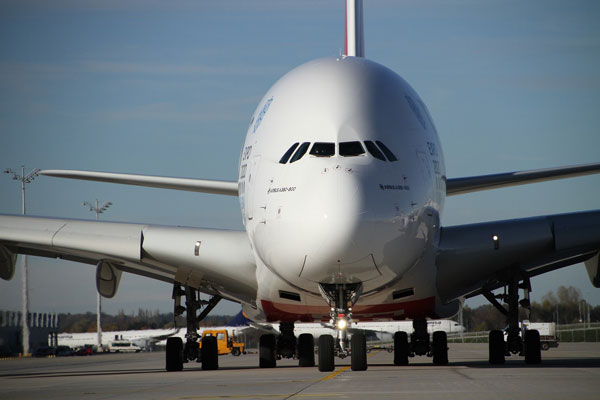Airbus escalates space ambitions as Boeing’s ULA faces delays

[Photo of an Airbus aircraft, Photo credit to Pixabay]
Recently, the aerospace rivalry between Boeing and Airbus has intensified far beyond Earth’s atmosphere, with Airbus ramping up its space investments and rapidly expanding its satellite and launch capabilities.
Meanwhile, Boeing’s space joint venture, United Launch Alliance (ULA), is facing mounting pressure due to technical setbacks and federal scrutiny.
Airbus’ renewed momentum comes at a time when ULA, co-owned by Boeing and Lockheed Martin, has been criticized by U.S. defense officials for failing to fulfill key national security missions.
Its Vulcan Centaur rocket, which received certification for military launches earlier this year, has yet to lift off again following earlier technical anomalies, including a component failure during a previous test flight.
By contrast, Airbus is pushing forward aggressively.
Its space division, a component of Airbus Defence and Space (ADS), reported a significant jump in Q1 2025 revenue, with a 28% year-over-year increase.
This performance represents a major turnaround after earlier struggles with the delayed and overbudget Ariane 6 launch vehicle.
After implementing cost-cutting measures completed and 2,500 jobs eliminated over the past two years, Airbus is now poised to scale up its space operations with greater efficiency.
Recent contract acquisitions highlight Airbus’ growing prominence in the space sector.
The company has secured multi-billion-dollar deals to supply communications satellites to Germany, radar surveillance satellites to the UK, and 100 broadband satellites for Eutelsat’s OneWeb constellation.
These contracts span both military and commercial sectors, positioning Airbus as a direct competitor not only to ULA but also to SpaceX, the industry’s current leader in reusable rockets and commercial launch cadence.
As part of its strategic outlook, Airbus is reportedly exploring partnerships to consolidate Europe’s fragmented space assets.
Industry analysts view this as a potential move to merge satellite operations with other European defense giants like Thales and Leonardo, forming a unified counterweight to U.S. dominance in the field.
This escalation places Boeing in a challenging position.
With the Atlas V rocket nearing retirement, Vulcan has become ULA’s sole launch vehicle.
However, the program has been marred by persistent delays and slow ramp-up, despite recent certification approvals.
The U.S. Space Force has flagged these delays as critical, as they have disrupted at least four high-priority launch schedules.
The commercial stakes are also high.
Both ULA and Airbus hold launch contracts for Amazon’s Project Kuiper satellite network, which faces a strict 2026 deployment deadline imposed by the Federal Communications Commission.
The provider that demonstrates faster and more reliable deployment will likely capture a greater share of this lucrative partnership.
ULA is concurrently attempting to shift its business model from government-focused contracts to a 50-50 mix of commercial and government launches.
This move puts it in even more direct competition with Airbus, which has already demonstrated its ability to serve both markets with recent wins and an expanding production pipeline.
Airbus’ current advantage now lies in execution speed and strategic alignment.
The company has absorbed earlier development costs, restructured its workforce, and regained traction in both military and commercial markets.
In contrast, Boeing and ULA are grappling with ongoing launch delays, growing regulatory pressure, and a narrowing window to demonstrate reliability.
For investors and policymakers alike, the message is clear: the global space race is no longer dominated by a single private company or government entity.
Airbus is positioning itself not merely to participate, but to lead in a new era of transatlantic competition where technological innovation and reliable deployment timelines will determine future dominance.

- Junyi Seo / Grade 11
- Seoul Academy

![THE HERALD STUDENT REPORTERS [US]](/assets/images/logo_student_us.png)
![THE HERALD STUDENT REPORTERS [Canada]](/assets/images/logo_student_ca.png)
